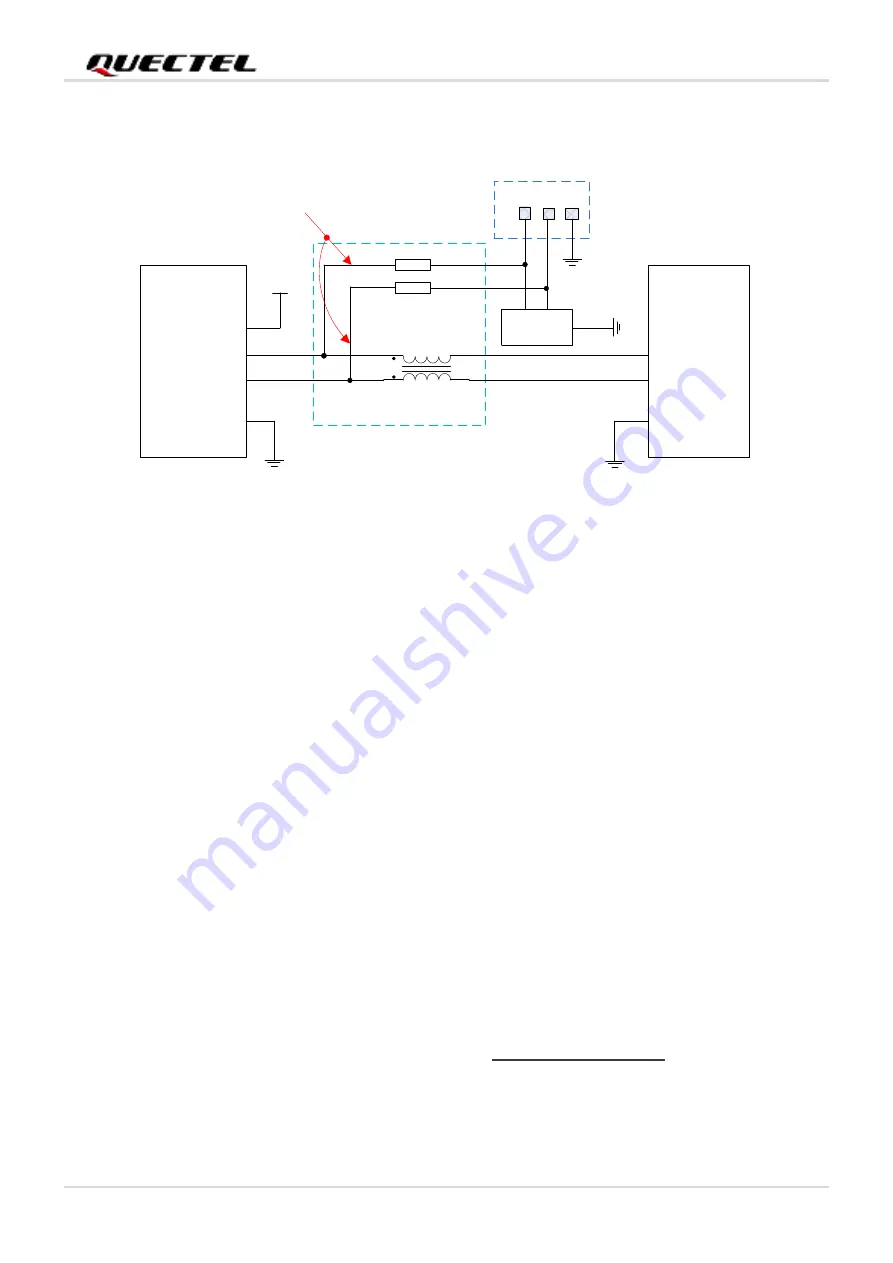
UMTS/HSPA+ Module Series
UC200A-GL_Hardware_Design 35 / 78
It is recommended to reserve test points for debugging and firmware upgrade in your designs. The
following figure shows a reference circuit of USB interface.
USB_DP
USB_DM
GND
USB_DP
USB_DM
GND
L1
Close to Module
R1
R2
Test Points
ESD Array
NM_0 R
NM_0 R
Minimize these stubs
Module
MCU
USB_VBUS
VDD
Figure 16:
Reference Circuit of USB Application
A common mode choke L1 is recommended to be added in series between the module and your MCU in
order to suppress EMI spurious transmission. Meanwhile, the 0
Ω
resistors (R1 and R2) should be added
in series between the module and the test points to facilitate debugging, and the resistors are not
mounted by default. In order to ensure the integrity of USB data line signal, L1, R1 and R2 components
must be placed close to the module, and R1 and R2 should be placed close to each other. The extra
stubs of trace must be as short as possible.
The following principles should be complied with when designing the USB interface, to meet USB
specifications.
⚫
It is important to route the USB signal traces as differential pairs with ground surrounded. The
impedance of USB differential trace is 90
Ω.
⚫
Do not route signal traces under crystals, oscillators, magnetic devices, PCIe and RF signal traces.
It is important to route the USB differential traces in inner-layer of the PCB, and surround the traces
with ground on that layer and ground planes above and below.
⚫
Junction capacitance of the ESD protection device might cause influences on USB data lines, so
please pay attention to the selection of the device. Typically, the stray capacitance should be less
than 2 pF for USB.
⚫
If possible, reserve a 0
Ω
resistor on USB_DP and USB_DM lines respectively.
For more details about the USB specifications, please visit http://www.usb.org/home.









































